In Conversation With… François Ozon
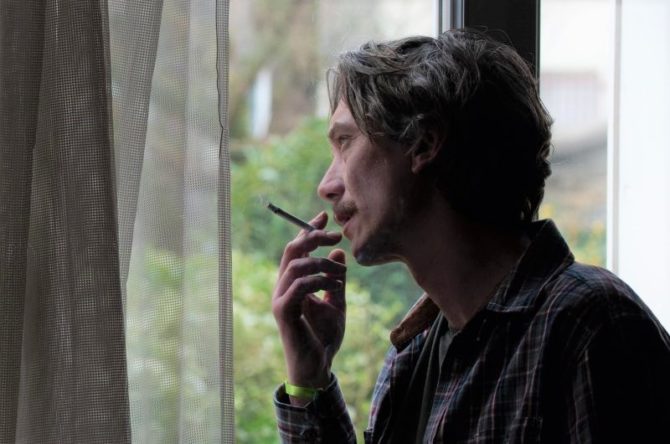
The acclaimed director opens up about his harrowing new film, By the Grace of God
By the Grace of God is your first film about a news story, and with so many characters…
My initial idea was to make a film about male fragility. I’ve brought many strong female characters to the screen. This time, I wanted to turn my attention to men who are visibly suffering and feeling emotional, things we usually associate with the female gender. The first idea for a title was actually The Crying Man.
Then I came across the story of the Preynat case. On the victims’ website La Parole Libérée (in English Lift the Burden of Silence), I read stories of men who had been abused as children at Church. I was particularly moved by Alexandre, a fervent Catholic who gave an account of how he’d struggled in silence until the age of forty, when he finally felt able to tell his story. The website also featured interviews, articles and email correspondence between Alexandre and members of Lyon’s Catholic hierarchy including Cardinal Barbarin and Régine Maire, the Church psychologist in charge of providing support to victims of priests. I found these documents fascinating, so I contacted Alexandre.
Tell us about that.
He brought along a file of his correspondence with the Church up to when he filed his complaint. I was so touched that he trusted me with those letters. We hear some of them in voiceover at the beginning of the film. At first I considered using this incredible material to write a play, then I turned to the idea of a documentary. I met with Alexandre frequently and did a little investigative journalism, meeting other victims like François and Pierre-Emmanuel and people close to them, their wives, relatives, Pierre- Emmanuel’s mother, their lawyers… I didn’t film these interviews, but I listened and took notes.
What made you decide to switch from documentary to fiction?
When I started discussing my project in concrete terms with the victims, I sensed they were disappointed and reticent about the documentary idea. They’d already given many interviews to the media and been featured in television reports and documentaries.
They were intrigued when a fiction filmmaker approached them. They imagined a film in the spirit of Spotlight where they’d become fictional characters played by famous actors. So I thought: This is what they want from me, and this is what I know how to do. But I approached the fiction with some trepidation, because I really liked these people and feared I wouldn’t be able to bring them to the screen in a way that did them justice.
How did you go about writing the script?
Initially I was tempted to twist reality to make it fit my script. The victims left gray areas in their stories and I had a tendency to take short cuts. Plus, the sheer number of characters frightened me. I was tempted to reduce. For example, I wanted to blend François’ and Emmanuel’s lawyers into one character to streamline the script. But the two women had different personalities and different perspectives on the story, so I embraced the magnitude of the ensemble film and did my best to respect the real facts and their complexities.
For the first part of the film, I asked Alexandre for precise details concerning the timeline of his interactions with the Church, especially his meetings with Régine Maire and his confrontation with Preynat. It was easier with François and Pierre-Emmanuel because I had their depositions. I also had access to all of their testimonies on Lift the Burden’s website. I knew their words, their expressions. In the film, when Emmanuel says to Preynat, ‵”I was a child,” those are Pierre-Emmanuel’s actual words, although he had written them, he didn’t say them directly to Preynat as he does in the film.
Did you meet Cardinal Barbarin, Régine Maire and Bernard Preynat?
Once I’d abandoned the idea of making a documentary, there was no longer any point in meeting them. There are no revelations. The facts of the investigation and the details I’m illustrating have already been exposed in the media or on the Internet. I didn’t take any liberties with the facts.
My priority was to tell the personal stories of the men who had been molested as children from their point of view as victims. I did take some liberties with the storylines of the people close to them, while remaining true to their experiences and the spirit of their testimonies. That’s why I changed their family names, making them fictional heroes, which I did not do with Cardinal Barbarin or Father Preynat.
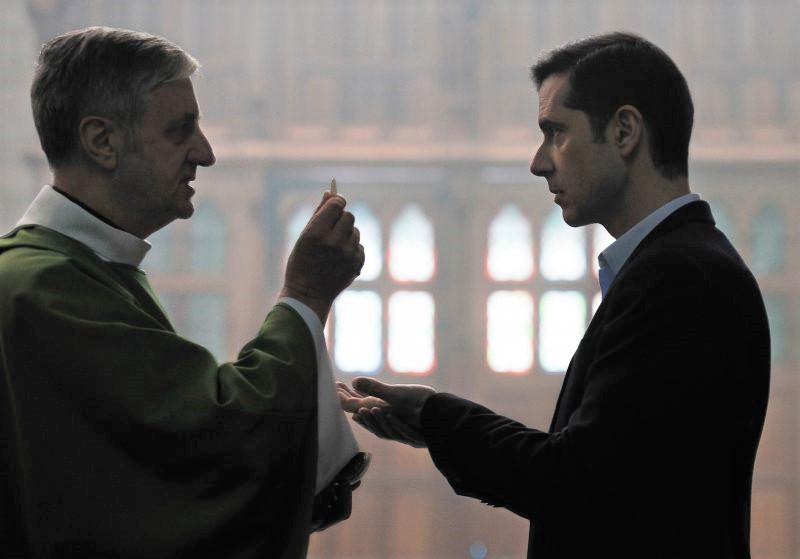
What made you decide to structure the film as a sort of relay race between three characters?
The reality of what happened made it self-evident. I quickly realized that at a certain point, Alexandre’s process stops and the story continues without him. His deposition leads the chief of police to open an investigation and contact François, who in turn creates the association Lift the Burden, through which he meets Emmanuel. It’s a domino effect.
The film begins with an individual’s struggle: Alexandre against the institution. Then he passes the baton to François, who creates a collective. And through that collective a new victim emerges: Emmanuel.
Alexandre and François were obvious choices because of their active roles in the case, whereas Emmanuel is more of an anonymous victim.
The choice of the third character was more difficult, because there were many victims to choose from. I needed dramatic progression. I needed the pain and emotions of each character to be different so I could convey different facets of the experience, different consequences of the Church’s actions on the private lives of the victims. After Alexandre and François – who come from comfortable backgrounds and have partners, children and jobs – it struck me as interesting to have a third character who is less socially integrated, whose pain is more raw, more psychologically and physically apparent.
Alexandre and François told me about Pierre-Emmanuel. They said he came from a different social background and was very sensitive and vulnerable. So I met him, and he really touched me. In writing his character (renamed Emmanuel), I was also inspired by the testimonies of other victims who were in great pain.
I want us to sense a dormant rage in this character. He’s suffered physically. He’s an epileptic, though the real Pierre-Emmanuel is not. The challenge is for the audience to get attached to each new character as he enters the story. Their stories are variations on the same theme, and I hope they enrich each other.
The film opens on the Cardinal walking from the back, then contemplating the city of Lyon from the top of the Basilica of Notre-Dame de Fourvière.
It was crucial to anchor the film in Lyon. Lyon was the first place of Christianity in Gaul and maintains a very conservative tradition of the Church.
Geographically, the Basilica on a hill overlooking Lyon provides a visual metaphor for the power the Church holds over the city.
The idea wasn’t to condemn the Church but rather to explore its contradictions and the complexities of the case. At one point a character explains his commitment to the association by saying, “I’m doing this for the Church, not against it.”
By opening the film with Alexandre, a fervent Catholic, you’re not immediately focusing on indignation against the Church.
Alexandre respects the institution and thinks Barbarin is an honest, courageous man who has always condemned pedophilia and who will thus take action. He believes in the goodwill of both Barbarin and the Church. And why not? At one point I film Barbarin praying. Maybe he’s asking God for help. And the problem with Preynat, setting aside his behavior with children, is that he was always seen as a good priest. He was well liked by his parishioners and his hierarchy.
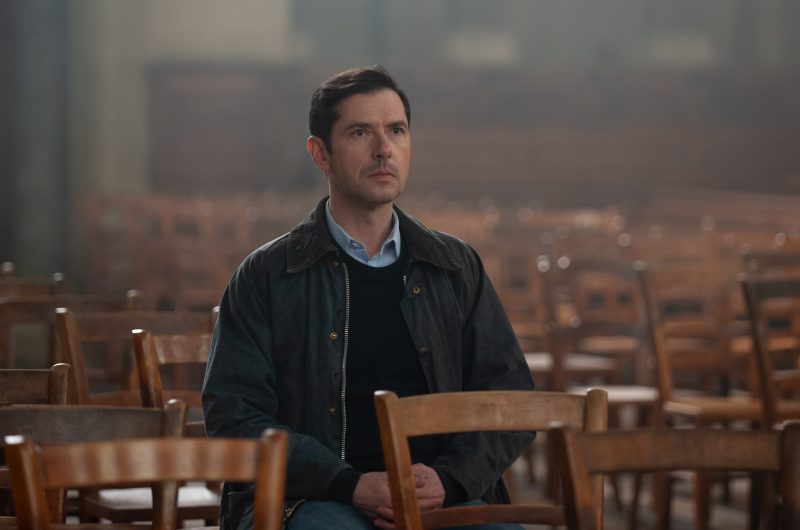
Right from the start everything is clear. There’s no suspense around the abuses committed. The tension is in the consequences of Alexandre finally expressing himself.
We had to hit the ground running and get straight to the heart of the matter, setting the pace with the email exchanges between Alexandre and the Church. I found his emails so powerful and well written that I absolutely wanted to use them, even though the financial backers were worried about all those voiceovers. What’s so fascinating and vertiginous about this case is that everything is clearly set out.
The facts are right there, but action doesn’t follow, making the injustice all the more extreme and incomprehensible.
I could have based the entire film on email exchanges between victims and the Church, and between individual victims. Social media and the internet played a significant role, accelerating the creation of Lift the Burden. I obtained elements from those sources to write the association meeting scenes. In real life, the members didn’t actually see much of each other.
Alexandre’s and François’ partners are very present in the film.
As they are in real life. Without their support, it would’ve been much harder for those men to do what they did. Their partners truly share in their struggle. The victims suffered for so long in silence that when they finally spoke out, their words affected everyone close to them, even provoking jealousy in the case of François’ brother, who says, “We’ve had enough of your priest shit! It’s all Mom and Dad talk about!” I wanted to give the audience a glimpse into the emotional and physical violence that can result when victims finally share their stories. I wanted to illustrate the repercussions.
Notably in Emmanuel’s relationship.
His girlfriend was abused as well, and she had a very painful experience with the justice system.
Emmanuel is having a much more positive experience. The media coverage does him a world of good. It’s a heady feeling for him to finally speak out and to be recognized as a victim. Suddenly people want his opinion. He’s found a reason, a meaning in his life. He told me he felt like he was experiencing a sort of “live therapy.” The group becomes a way for him to bloom and thrive as an individual. This is also true for François and Alexandre, but more so for Emmanuel, who had no job or social recognition. The risk is you could get pigeonholed. Didier, the victim who refuses to file a complaint, illustrates this when he says he doesn’t want to be branded a “pedophile victim” for life.
Alexandre’s own children also get very involved.
It’s difficult for Alexandre to tell his children what he went through, but at the same time, they’re at an age when they could be abused too. So it makes sense to him, though we might wonder if his children really want to hear it. Victims often become capable of talking about what happened to them when their own children reach an age when they could be abused. Suddenly it all becomes horrifyingly clear: “I was little like them, innocent like them.” It awakens a need to speak out and take action.
Alexandre’s wife tells him he’ll be a victim all his life if he forgives Father Preynat.
Her point raises questions I’ve also pondered. The Catholic religion’s redemptive logic fuels the confrontation organized by Régine Maire between Alexandre and Preynat. Within that logic, the priest is supposed to ask forgiveness. Preynat does not, making Barbarin furious. On the other hand, according to the victims’ psychologists I interviewed, this confrontation is an aberration because it places Alexandre once again in the position of the victim facing his abuser, which Preynat continues to be. In order for the confrontation to be positive and healing, you must leave the ambiguous space of morality and religion and enter a legal framework.
Which begs the question: Is the Church’s wait-and-see attitude a symptom of an aging institution stuck in its ways, or is it rooted in the very nature of the Catholic religion, a religion of forgiveness? Barbarin says, “There will always be an open door for sinners” even while agreeing that Preynat should be punished. His position is ambiguous. What side is he really on? This leads Alexandre to question his faith, as evidenced in the final scene when his son asks him: “Do you still believe in God?” The real question is: Do you still believe in the Catholic institution?
After the stylized Double Lover (L’Amant Double), your directorial approach here is more in the background, letting the subject matter and the characters’ journeys speak for themselves.
I directed each part of the film according to the personality of the main character featured in it. To illustrate Alexandre’s “crusade,” my direction is understated and conventional, playing a lot on backlighting and chiaroscuro. When we get to François, the rhythm is choppier. It feels a bit more like an action film as he battles to bring the scandal to light and give voice to the victims. The tone then becomes more melodramatic with the arrival of Emmanuel, who is fighting for survival in a legal case that is over his head.
The most important thing at all times was to stick to their point of view, accompany their efforts as closely as possible. I wanted to ennoble their struggle, paint them as heroes in the tradition of certain American political films. I had to be close to the actors and keep the pace tight as there was a lot of information to get across. The film has an educational dimension that we worked to make more fluid in the editing by underscoring the sensation of a relay race. For the first time, I used two cameras for all group scenes and meal scenes so the actors could act all the way through as freely as possible.
The only “cinema effects” are the flashbacks.
Since nearly everything here is built on words, at a certain point we need images to embody the violence inherent in what these men experienced as children. I created flashbacks for each character that show very little (a path, a door opening, a tent closing) but suggest a lot in the space of an instant through location, lighting… We know the facts, they have been stated. Now the audience imagines them, completing the horrific picture themselves.
François has the only flashback with dialogue. For him, the most painful memory is not so much what Preynat did as when his parents told him Preynat could go to prison. As a little boy, he did not want to be responsible for that.
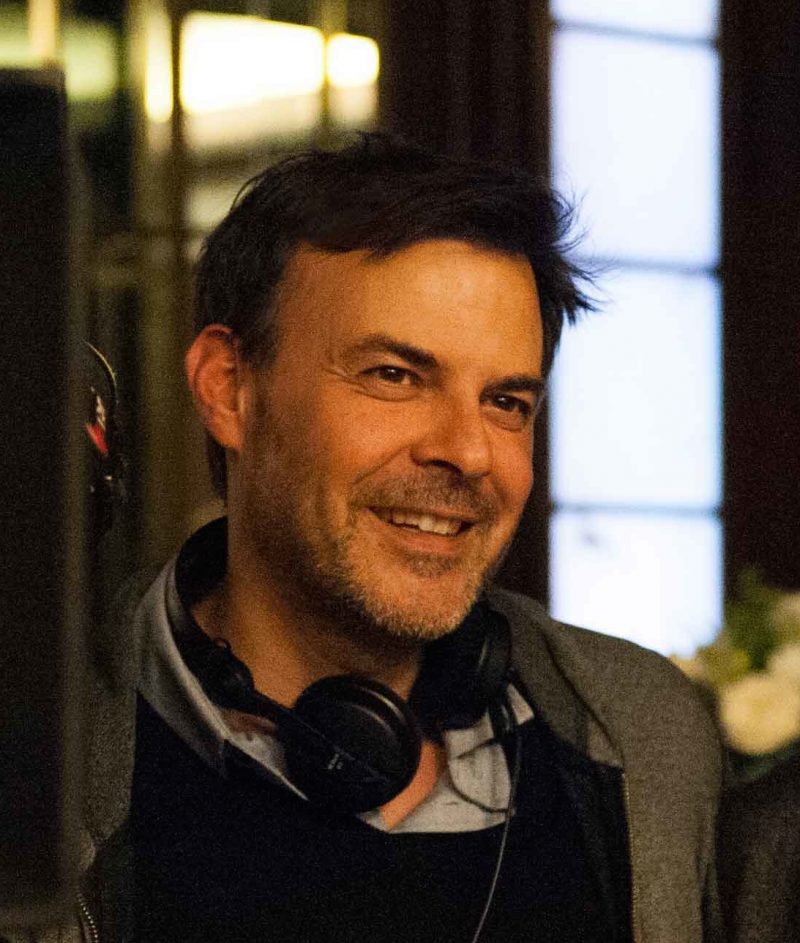
What was the shoot like?
There was an urgency to make the film. The news was moving fast and the subject matter was difficult to finance. The theme of pedophilia scares people. The project was not considered bankable. Many locations were off-limits to us (the Church interiors were shot in Belgium and Luxembourg). I found myself facing constraints similar to what we experienced on Under the Sand (Sous Le Sable). Fortunately my producers and the whole team believed in the project and supported it, so rather than discouraging us, the hurdles we had to overcome gave us the courage to push the film and prove that it was necessary.
Tell us about the casting.
It’s unusual to know the faces of the real protagonists without needing to seek actors who look alike because they are not known to the audience.
I’d worked twice with Melvil Poupaud, an actor who worked with Eric Rohmer in his youth, and I like him a lot. He’s becoming even more interesting with age, and I knew that he was himself exploring the place of faith in his life. I’d also worked with Denis Ménochet, so I know that his energy and physical strength mask a heightened sensitivity, making him a good fit for François. As for Swann Arlaud, I’d just seen him in Bloody Milk (Petit Paysan) and sensed a restlessness and a fragility that corresponded exactly to what I wanted for Emmanuel. In the role of Father Preynat, Bernard Verley, another actor who has worked with Eric Rohmer, brought charisma, strength and a friendliness that adds complexity to the character. He was not afraid to play such an unflattering role. The terrifying thing about this character is that he seems utterly oblivious to the gravity of his actions.
François Marthouret, who played the father in Sitcom, plays Cardinal Barbarin.
I’ve always loved the tone of his voice and his somewhat theatrical diction. Barbarin may have something in common with the father in Sitcom. They both speak uncomfortable truths in suave voices, full of understanding and sympathy, then do nothing. This was comical in Sitcom. Here it’s far more terrifying, given the seriousness of the situation and the appalling disconnect between his words and his actions.
And Josiane Balasko?
I thought of Josiane Balasko, who I admire, right away. She is rarely cast in dramatic roles. I was thrilled that she was willing to accept a supporting role. I was also keen to work with Hélène Vincent, but wasn’t sure whether to cast her as François’ mother or Régine Maire. She herself chose the role of the mother, and does a beautiful job embodying a very human woman riddled with guilt. Martine Erhel plays Régine Maire. She was in my short films when I was a student at the Fémis. She looks a great deal like Régine Maire, and I knew she’d perfectly convey the character’s fascinating blend of coldness and kindness.
The music was composed by Evgueni and Sacha Galperine.
I really liked their work on Andrey Zvyagintsev’s Loveless, especially the way they used repetition and created tension, so I asked them to compose a contemporary score using traditional elements from Church music like organs and choirboys.
Do you think this film might help change things?
I showed the film to a priest who said, “This film could be an opportunity for the Church. If it embraces it, maybe it will finally assume responsibility for the pedophilia in its midst and combat the scourge once and for all.” Let’s hope so.
Interview courtesy of Music Box Films.
By the Grace of God is out in cinemas now.
Share to: Facebook Twitter LinkedIn Email
More in chuch, fiction, media, religion
Leave a reply
Your email address will not be published. Required fields are marked *


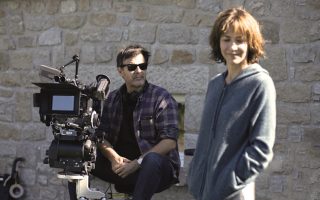

REPLY